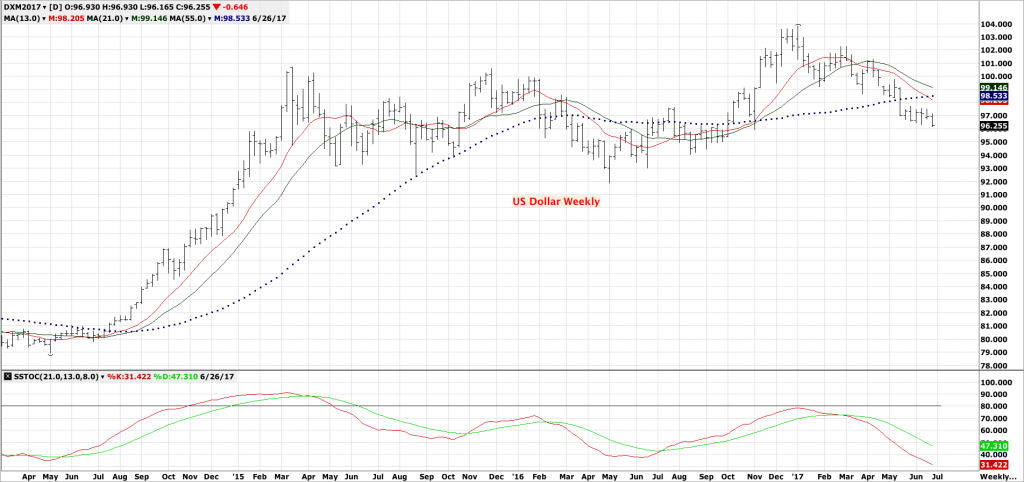By: Dan Hueber –
While ratings for the corn crop remained unchanged this past week, it would appear that just about every other major crop slipped backwards. In the good/excellent category, soybeans lost 1%, cotton dropped 4%, sorghum slipped 1%, peanuts down 3%, winter wheat was unchanged but remains below 50% for G/E, but spring wheat dropped 1%. Barley lost 4%, oats 2%, pasture conditions were down 3%, and topsoil moisture slipped 3% in the adequate/surplus columns and subsoil 2%. About the only crop that I can see that shows an actual improvement was rice, which was up 3% in the good/excellent category. Combine this with a forecast that is calling for heat to build in across a good swath of the country for the second week of July, and it is understandable as to why the bears a feeling a bit uncomfortable this morning. We shall have to see if they are really sitting on the “hot” seat in the weeks ahead.
That has absolutely been the case for French farmers as Consultancy Strategie Grains cut the forecast for the soft wheat crop in that country by 1.6 MMT from the last estimate posted just 12 days ago. If heat and drought is plaguing the French crop, it would seem safe to believe that the problems extend to other European nations a well. To paraphrase a quote often attributed (incorrectly) to the statesmen and Illinois Senator, Everett Dirksen, A million metric tons here and a million metric tons there and it pretty soon, you are talking real production loss.
It would seem that when we speak of global grain trade, most of the emphasis is understandably directed towards production, but of course, transportation should come in as a close second. There was an interesting piece in the Financial Times this morning highlighting a recent report by Chatham House that reminded us that there are still a number of potentially serious “chokepoints” around the globe that could seriously disrupt the flow of grain to key areas of demand. It would seem that this should be even more critical in this era of just in time inventory and the extreme volatility that we are experiencing with global weather. The report points out that between 2000 and 2015, global food trade increased by 127% with 20% of global bean trade and nearly 17% of corn moving through the Panama Canal each year. Additionally, 20% of the global wheat trade and another 17% of corn trade moves through the Turkish Straits, which is a major route for the most import dependent region of the world, the Middle East and North Africa (MENA). While there is certainly no quick-fix to reducing the risk of “chokepoints” around the globe, as this would involve long-term infrastructure investments, but it is interesting to mention that the reports specifically points out that China has already done the most to reduce its potential exposure by investing around the globe. I am pretty sure though, that Amazon drones delivering bags of groceries from Whole Foods may not help much to mitigate these risks.
While weather is and will remain on the forefront of the mind of the trade, it should be pointed out that the US Dollar has renewed selling pressure and has again slipped into lower lows for the year. The selling this week appears to have stemmed from comments by the European Central Bank president, Mario Draghi, who stated that he was confident that existing policies will restore inflationary pressure to the EU economy. While I am by no means and economist and I am sure that the ECB has teams of them working on economic models, just as they do at the Fed, but considering how well zero interest rate policies and QE stimulus has worked in stimulating inflation here in the United States, all I can say to Mr. Draghi is, good luck with that forecast.
